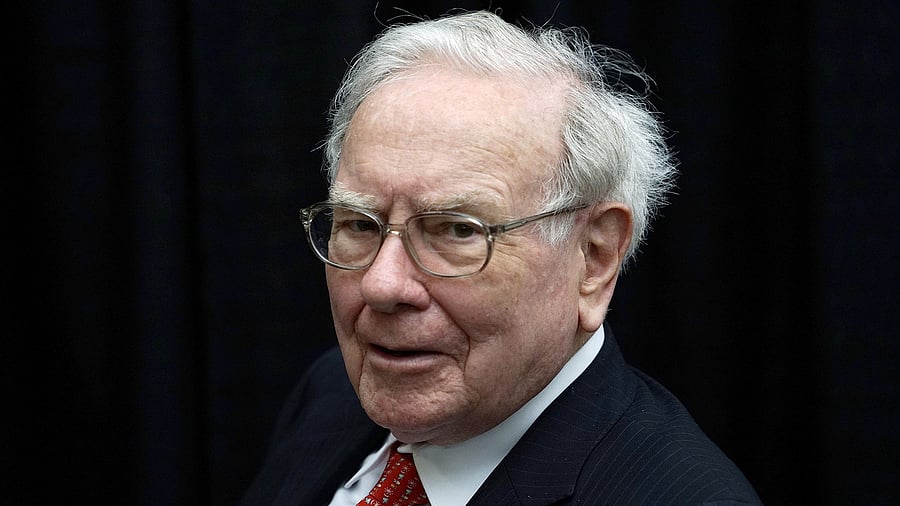
Warren Buffett
Credit: Reuters Photo
The momentous news of Warren Buffett formally stepping down as CEO of Berkshire Hathaway may not have caught many off guard, given the meticulously crafted transition plan in place for years. But it should prompt corporate India, particularly family-led enterprises, to pause and reflect — on the timing, method, and culture of succession.
Succession, when done well, will be more than just a handover ceremony. It is a philosophy, a discipline, and perhaps even a moral duty. Buffett didn’t retire in a rush, nor did he delay until decline forced his hand. He led when he still had clarity, conviction, and, most importantly, choice. His stepping down is a conscious continuation of what he always promised his shareholders — governance without drama.
In India, however, too many captains of industry approach succession like a dentist’s appointment. Best postponed. The reasoning is familiar — “I’m still sharp”, “the next generation isn’t ready”, “let the IPO go through”, “just a few more years”… Meanwhile, years stretch into decades, and organisations become personality cults instead of institutions.
However, there is a big business difference. Buffett did not run factories or direct sales teams. He did not sit in monthly marketing reviews or obsess over supply chain margins. He oversaw an architecture of ownership, not operation. In doing so, he created the modern HoldCo playbook — where strategic capital allocation and values-based governance matter more than tactical business execution. Yet, for decades, he remained the most recognisable face of Berkshire Hathaway. His charisma never overshadowed his humility, nor did his popularity breed insecurity among his professional managers.
There’s an old saying that captures this dynamic well: “You can tell a great leader by how many people are willing to disagree with him without fear.” Buffett built precisely that culture. His inner circle of long-serving lieutenants were not extensions of his will; they were stewards of capital and custodians of culture in their own right. They didn’t just report to Buffett — they worked with him. This is where the Indian business ecosystem must take note.
Buffett’s case offers several quiet but profound cues. First, he was not running an operating business in the traditional sense. He was running a holding company — a modern-day dharmic empire of capital. Yet, he allowed operating leaders of his investee businesses full autonomy, with the clear understanding that they would lead commercially, while he would steward values, capital, and governance.
This is different from the Indian ecosystem, where most of the leaders wear every hat from chief strategist to head of procurement, and occasionally chief disrupter of succession plans. Except for few outliers in corporate India, the idea of separating ownership from operations, and of letting professionals run businesses while the promoter plays the role of strategic compass, remains hard to digest. Yet that is exactly what Buffett modelled — he never had to be everywhere, but his values were.
He also did what very few Indian patriarchs manage to do — keep family out of the boardroom when meritocracy demanded it. His children may have had access to his wisdom, but not to his executive chair. In Buffett’s world, legacy isn’t about bloodlines. It’s about business lines being led by those best equipped to do so. “Chains of habit are too light to be felt until they are too heavy to be broken,” Buffett once said. That includes habits of nepotism, legacy entitlements, and cultural flattery.
Perhaps most admirable is his understanding of longevity. Just because one can lead longer, doesn’t mean one should. There is a difference between being physically present and being psychologically, intellectually, and emotionally equipped to take decisions that shape not just companies but generations. While many retain impressive energy well into their 60s and 70s, the ability to truly listen, delegate, and let go often recedes faster than the hairline.
We now live in an era where founders have the luxury — and burden — of longer lifespans and extended professional relevance. This makes the question of ‘when to go’ even trickier. But the best leaders don’t wait till their faculties fade. They act when they still have clarity, to leave on their own terms. As the poet David Whyte put it, “The soul would rather fail at its own life than succeed at someone else’s.” Succession, when done at the right time, is the ultimate act of confidence.
Let us also not overlook what Buffett built — a stable of leaders, many of whom served for decades, not out of compulsion, but belief. That kind of loyalty is not commanded through paychecks or charisma. It is cultivated through a culture of trust, autonomy, and shared purpose. This, too, is a wake-up call for Indian boards: the idea is not to clone yourself, but to craft a culture that survives you.
A wise chairperson once said, “It is better to leave 10 years too early than one day too late.” For Indian promoters, board leaders, and patriarchs, the Buffett transition is not just a moment in global capitalism. The question it asks is uncomfortable but essential: Will you wait to exit when you must, or will you choose to go when it still means something?
(Srinath Sridharan, author of ‘Family and Dhanda’, is a corporate adviser and independent director on corporate boards. X: @ssmumbai.)
Disclaimer: The views expressed above are the author's own. They do not necessarily reflect the views of DH.